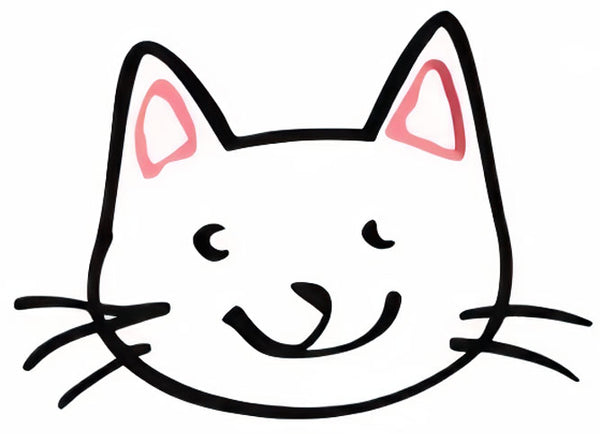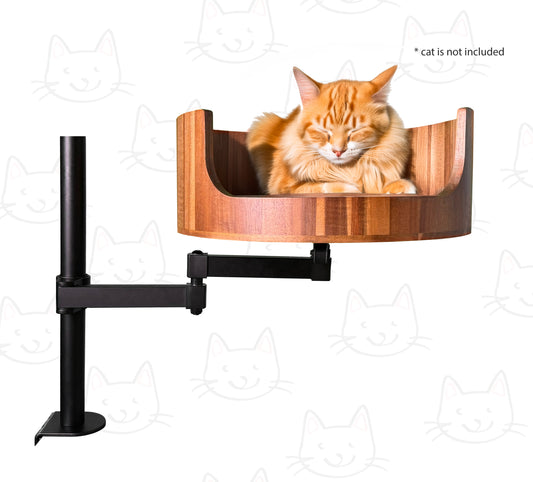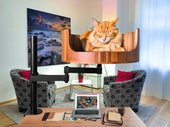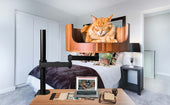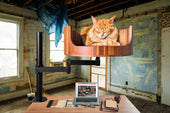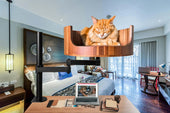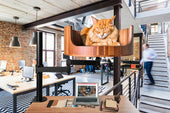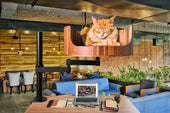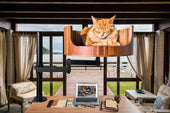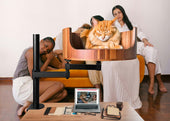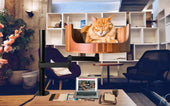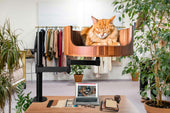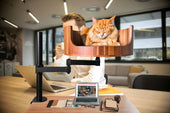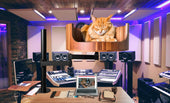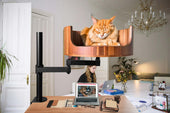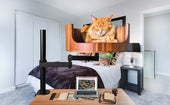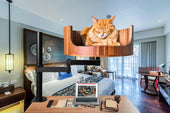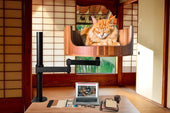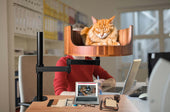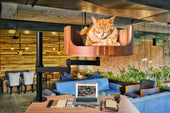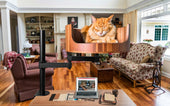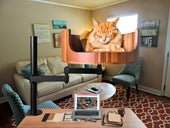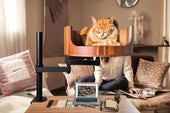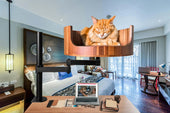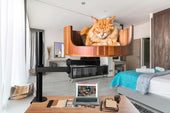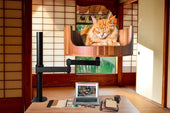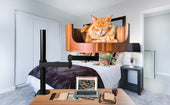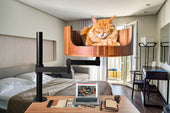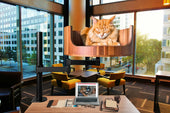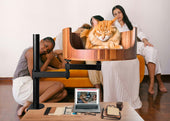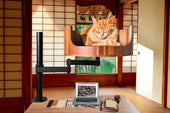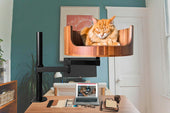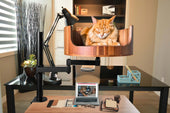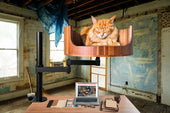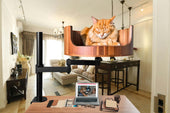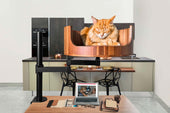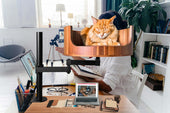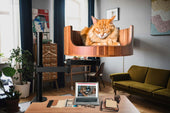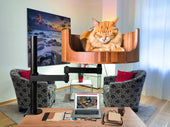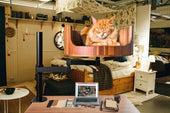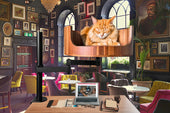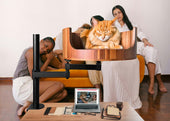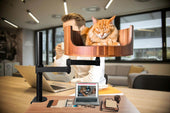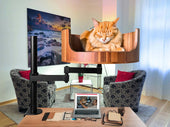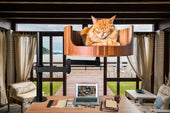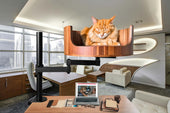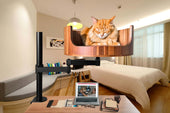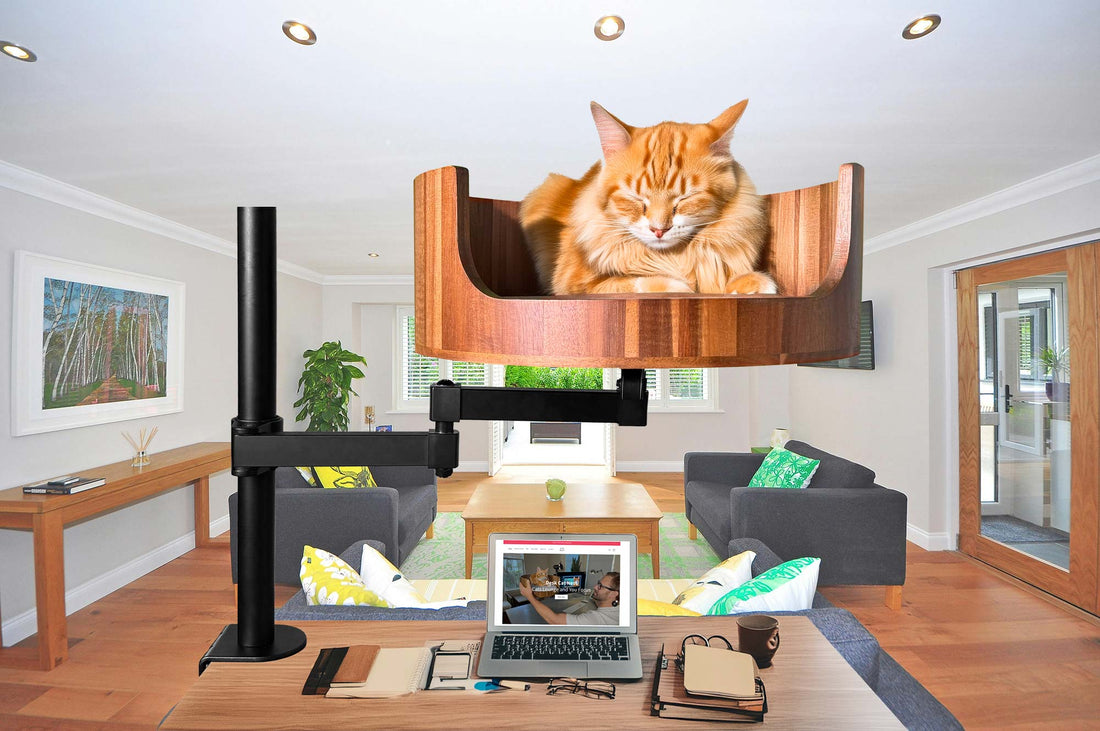
Flicking Cat Tail: Understanding Feline Communication
Share
Have you ever wondered why your cat flicks its tail? Desk Cat Nest has the answers you’ve been looking for. Feline communication can be a complex and mysterious language, but understanding your cat’s tail movements is key to deciphering their thoughts and feelings.
In this article, we will explore the different reasons why cats flick their tails, from expressing excitement to signaling aggression. We will delve into the significance of tail position and speed, as well as how tail flicking can vary depending on the cat’s mood and environment. By the end of this article, you will have a better understanding of your feline friend’s body language and be able to communicate with them more effectively. So let’s unravel the secrets behind the flicking cat tail and deepen our connection with our beloved pets.
1. The flicking of a cat's tail is a crucial form of communication that can indicate their mood and intentions.
2. Understanding the different tail flicking motions, such as slow swishing or rapid thrashing, can help decipher what your cat is trying to communicate.
3. Context is key when interpreting your cat's tail movements; consider their body language and the situation they are in.
4. Flicking their tail can signify excitement, agitation, or even a desire to play, making it essential to pay attention to this behavior.
5. By observing and interpreting your cat's tail flicks, you can better understand and strengthen your bond with your feline companion.
Feline Tail Flicking Behavior
Flicking a cat's tail is a common behavior that can indicate various messages depending on the context. Cats often flick their tails swiftly when they are excited or agitated, such as during playtime or when feeling threatened. This behavior can also communicate annoyance or frustration, as a warning sign before potential aggression. Understanding the subtleties of tail flicking can help cat owners interpret their pet's emotions and respond accordingly to prevent any undesirable behavior.
Interpreting Different Types of Tail Flicking
There are different types of tail flicking that cats use to convey different messages. A quick, rapid flicking motion usually signifies excitement or anticipation, such as when a cat is about to pounce on a toy. However, a slow, deliberate flick can indicate annoyance or displeasure, especially when combined with other body language cues like flattened ears or dilated pupils. Recognizing these variations in tail flicking can help cat owners adjust their interactions with their feline companions and ensure a harmonious relationship.
Body Language Cues to Consider
While tail flicking is a crucial part of feline communication, it should be observed in conjunction with other body language cues to fully understand a cat's emotional state. For example, a cat with an upright tail flicking rhythmically may be in a playful mood, while a cat with a low-hanging tail flicking aggressively may be feeling threatened or defensive. By paying attention to a cat's overall body language, including ear position, vocalizations, and facial expressions, cat owners can accurately interpret their pet's feelings and respond appropriately to provide comfort or reassurance.
Frequently Asked Questions
What causes my cat to flick its tail?
There are several reasons why your cat may flick its tail, including overstimulation, stress, excitement, or even aggression. Observing your cat's body language and surroundings can help you pinpoint the cause of the tail flicking.
How can the Desk Cat Nest help with my cat's tail flicking?
The Desk Cat Nest provides a comfortable and secure space for your cat to relax and unwind, helping to reduce stress and anxiety, which can contribute to tail flicking behavior. The cozy design of the nest can also appeal to your cat's natural instinct to seek out a warm and enclosed space.
Is the Desk Cat Nest suitable for all cat breeds?
While the Desk Cat Nest is designed to accommodate most cat breeds, it's important to consider your cat's size and preferences. Some cats may prefer larger or more open spaces, so it's essential to observe your cat's behavior and reactions to determine if the Desk Cat Nest is the right fit for them.
How should I introduce my cat to the Desk Cat Nest?
It's recommended to place the Desk Cat Nest in a quiet and familiar location where your cat frequently spends time. You can encourage your cat to explore the nest by placing treats or toys inside and creating a positive association with the space. Patience and gradual introduction will help your cat feel comfortable using the Desk Cat Nest.
Can the Desk Cat Nest help with other behavioral issues?
While the Desk Cat Nest is primarily designed to provide a cozy retreat for your cat, it can also help reduce other behavioral issues associated with stress or anxiety, such as excessive grooming or hiding. Creating a calming environment with the Desk Cat Nest may positively impact your cat's overall well-being and behavior.
In conclusion, the Desk Cat Bed is a valuable choice for cat owners dealing with the issue of flicking cat tails. This innovative product provides a comfortable and safe space for cats to relax and unwind, reducing stress and anxiety that may lead to tail flicking behavior. With its cozy design and durable construction, the Desk Cat Bed offers a solution that promotes relaxation and contentment for furry friends. Invest in the Desk Cat Bed today to help your cat find peace and comfort in their daily routine.
